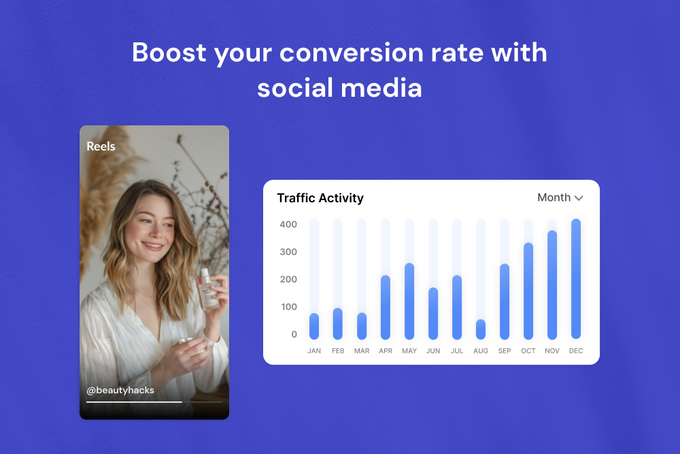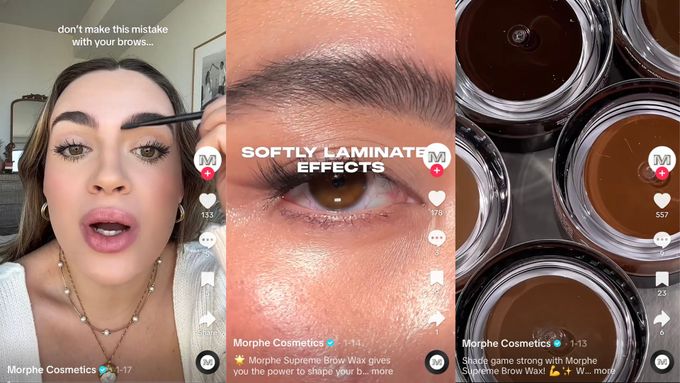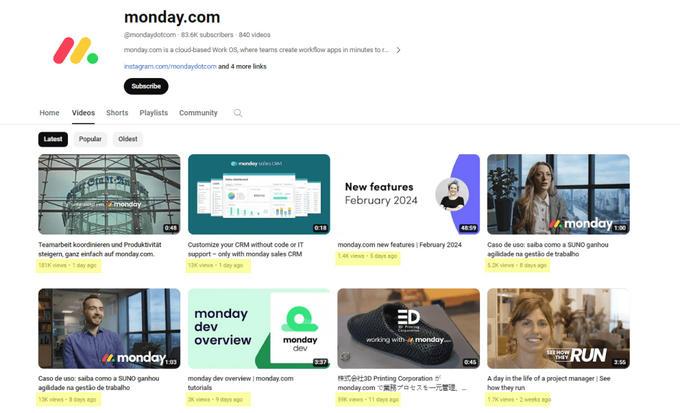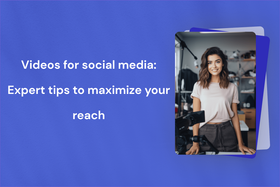From likes to leads: How to add social media to your SEO conversion funnel
For brands both big and small, social media offers invaluable visibility that can drive conversions at every funnel stage.
Updated June 28, 2024

Key takeaways
- Social media can support SEO funnels by promoting content and retargeting visitors.
- Content should provide value, engage audiences, and appeal to funnel stages–not just sell.
- Emerging brands should have a thoughtful social media presence to build connections and leads.
- Tailor content style and format to match each platform's unique audience.
If you’re doing SEO to drive traffic to your website, you likely have a conversion funnel in place to turn that traffic into leads and sales. But did you know social media can help support and optimize that SEO funnel?
Social platforms like Facebook, YouTube, Instagram, TikTok, and LinkedIn provide opportunities to reach massive audiences and funnel them back to your website by promoting your brand.
Retargeting through social ads can also help recapture website visitors who left without converting. When coordinated correctly, SEO and social media work hand-in-hand to drive continual awareness and repeat traffic.
Let's get into the specifics.
Aligning your SEO strategy with social media
Aligning social media channels with SEO strategies involves more than just showcasing products or services. It's about offering valuable, engaging content that generates brand awareness and resonates with your target audience across various stages of the conversion funnel.
Diversify your content
While product-centric posts have their place, focusing on topics beyond your offerings enhances brand visibility and attracts new audiences at the top of the funnel. For instance, a brand like Adobe markets its software, shares educational how-tos, and provides a look behind the scenes at who its employees are and why they make it a company worth investing in.
Make your content entertaining
Incorporating entertaining or inspiring elements into your social media content can captivate audiences and foster engagement. Utilizing engaging visuals, leveraging influencers, or showcasing products in unique ways can amplify your brand's presence and appeal.
Dunkin' does a great job at showcasing influencers and celebrities enjoying their products in relaxed and engaging video content.
Target different funnel stages
Recognizing the varying levels of audience awareness within the SEO conversion funnel is crucial. While bottom-of-the-funnel content directly promotes products, upper-funnel content focuses on building brand awareness and attracting new followers. Creating a balance between the two ensures a comprehensive approach to audience engagement.
Popular beauty brand Morphe brilliantly locates a balance between top- and bottom-funnel content, showcasing products and brand values effortlessly.
» Get paid by monetizing your expertise with videos for social media.
Adopt a topic-centric approach
Understanding keywords translates to identifying relevant topics that resonate with your audience. Platforms analyze content to match user interests, so you need to align your content with popular and relevant topics.
- Top-centric approach: Social media algorithms assess content relevance based on topics rather than traditional keyword optimization. By strategically selecting topics aligned with audience interests, brands can increase visibility and attract relevant followers.
- Iterative content strategy: SEO content needs regular optimization, and social media is no exception. Publishing diverse formats, analyzing performance metrics, and refining strategies based on audience engagement are key to maintaining relevance and maximizing impact.
Metrics to look out for
Engagement metrics serve as important indicators of how well your content performs and resonates with users across various social media platforms. These platforms' algorithms use this information to understand your content and who to recommend it to, impacting organic reach and audience growth.
Although the importance of each varies per platform, the most important engagement metrics include impressions, views, watch time, likes, comments, and shares. These metrics can help you identify the content users want to see more of.
» Learn how content creation affected performance marketing.
What to consider as a brand starting out
Social media usage continues to grow, with over 4 billion people now active on major platforms like Facebook, Instagram, and YouTube. While it is possible to succeed without leveraging social media, having a strategic presence on relevant platforms can allow emerging brands to cost-effectively target specific demographics, tell their brand's story, encourage engagement with potential customers, and facilitate word-of-mouth marketing.
As long as the content is thoughtful, genuine, and avoids overly promotional messaging, social media can help new brands build meaningful connections, nurture leads, and support conversions.
Consider these strategies.
1. Cross-promote channels
Make sure to interlink your social media profiles and SEO content to allow audiences to cross-pollinate. For example, promote your YouTube videos in relevant blog posts and link to your educational blogs from social posts. This builds awareness across channels and continues moving people down the conversion funnel.
PlayStation uses TikTok and Instagram Reels to post short clips from their longer-form videos on YouTube, encouraging users to explore all of their social media channels.
2. Be consistent
Just as quality content over time is key for SEO success, regularly publishing engaging social content is critical for building an audience. Maintain a consistent posting schedule on each platform and continue optimizing based on analytics. Demonstrating authority in your niche via content volume and quality will convert visitors into followers.
3. Learn from competition
Research what content your competitors and other brands you admire are creating across social platforms. For example, fashion and apparel brands like POPFLEX rely heavily on Instagram and TikTok for creating very visual, lifestyle-oriented content.
B2B companies like monday.com focus more on educational content best suited for YouTube and LinkedIn.
See what’s working across their channels and apply those lessons.
» Explore proven strategies to build a brand that lasts.
4. Use influencers and UGC
Strategic influencer partnerships and sponsored content help expand your reach and build topical authority. Associate with niche influencers aligned to your brand position who are already engaged with your target demographic. This injects your brand into new conversations.
Additionally, incorporate user-generated content like unboxing videos or reviews. This authentic content adds variety and keeps feeds fresh while still maintaining brand voice and style. Native relies on a lot of content from both influencers and customers to showcase the various benefits of using its products.
5. Match content to platforms
Keep in mind each social media platform caters to a unique audience interested in different content formats. For example, quick YouTube Shorts don’t necessarily translate to long-form educational YouTube videos. Similarly, visual platforms like Instagram require different content than text/link-based platforms like LinkedIn. So tailor your approach appropriately.
Social media platform pros and cons
Each social media platform is different. Here are some of the main channels where we have seen growth and what to consider when it comes to supporting conversion at the bottom of the funnel.
As of 2023, Facebook is the most-used online social network, with a whopping 3 billion active monthly users. It’s an excellent platform for building brand awareness, engaging with your audience, and driving conversions. Leverage Facebook ads, create engaging content, and use targeted campaigns to reach potential customers.
Pros
- Wide reach and opportunities to create awareness
- Targeted advertising
- Many engagement opportunities
Cons
- Declining organic reach
- Limited conversion opportunities
YouTube
As the second largest search engine after Google, YouTube presents massive opportunities for discoverability and visibility. Here, you can use video to showcase your products, share tutorials, and create compelling brand stories. Remember, YouTube videos often appear in Google search results as well, enhancing your overall online visibility.
Pros
- Reach a large and diverse audience
- Higher visibility on Google
- Evergreen content
Cons
- High competition
- Time and resource intensive
Pushing visual content since 2010, Instagram hosts around 2 billion monthly active users. Use eye-catching images, stories, and reels to showcase your brand. Collaborate with influencers, run contests, and leverage shoppable posts.
Pros
- Various content types
- Build a loyal, engaged community
- Second best platform for influencer marketing
Cons
- Unpredictable algorithm
- Reaching new followers can be challenging
TikTok
A rising star in many marketing strategies, TikTok offers immense creative potential. Short-form videos, user-generated content, and trends can skyrocket your brand’s visibility. Plus, TikTok's algorithm prioritizes engagement over followers, which levels the playing field.
Pros
- Creators are easily discoverable
- Opportunities for interaction with stitches and duets
- Top platform for influencer marketing
Cons
- Getting followers can be difficult
- Content saturation
Regarded as a professional network, LinkedIn is where business meets networking. With over 774 million users worldwide, it’s a goldmine for B2B brands.
Pros
- Connect directly with potential clients
- Build trust and topical authority
- Networking and lead generation opportunities
Cons
- Limited reach for B2C
- Less diverse audience
Use socials as a conversion stepping stone
Supporting your SEO conversion funnel with strategically optimized social media content can significantly boost brand awareness, drive traffic across channels, and ultimately help convert more visitors into leads and loyal customers. It's all about continually testing content types across platforms and honing your approach based on what content performs and encourages your audience down the funnel.






